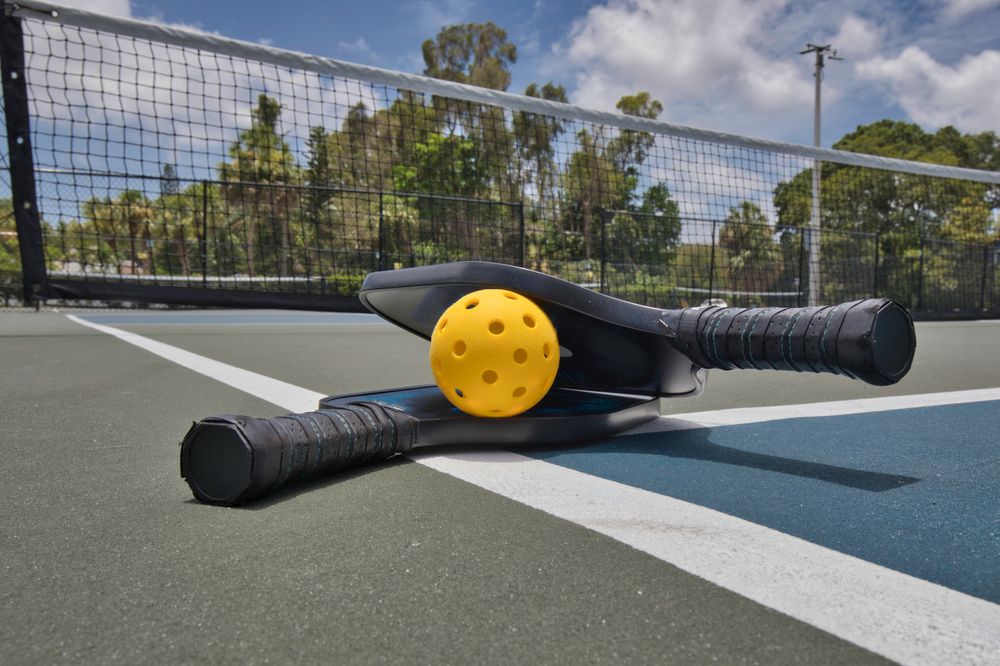Step-by-Step Directions for Setting Up a Backyard Pickleball Court in Any Size Space
Step-by-Step Directions for Setting Up a Backyard Pickleball Court in Any Size Space
Blog Article
Transform Your Outdoor Area: How to Layout and Develop Pickleball Courts in Your Residential Yard
Creating a pickleball court in your backyard not only adds value to your residential property but likewise gives a distinct possibility for entertainment and social interaction. Understanding the crucial measurements, site option, and product choices is critical for a successful setup. Additionally, the style and building and construction procedure can substantially influence the usability and enjoyment of the court. As you think about these aspects, you'll locate that thoughtful planning is key to achieving a visually appealing and useful space that invites both play and neighborhood interaction. What may be the initial steps in this transformative trip?

Recognizing Pickleball Court Capacities
When getting started on the trip to design a pickleball court in your yard, it's important to grasp the details measurements that define an official court. An official pickleball court determines 20 feet large and 44 feet long for both songs and increases play. Furthermore, the court is divided into two equal halves by a centerline prolonging from the standard to the non-volley area, which is situated 7 feet from the web on both sides.
The web itself stands at 36 inches high at the sidelines and 34 inches high at the facility, ensuring a consistent playing experience. Surrounding the court, a minimum of 3 feet of buffer area is suggested on all sides to fit gamer motion and to protect against injuries throughout gameplay.
For optimum efficiency, take into consideration including proper surface materials and sufficient drain remedies when intending your court. The alignment of the court should also be taken into consideration to minimize sunlight interference during peak playing hours. Recognizing these measurements is important as they will assist the construction process and make certain that your yard pickleball court fulfills main standards for recreational play.
Choosing the Right Location
Choosing an ideal area for your backyard pickleball court is important to maximizing both pleasure and performance. The optimal website should offer a flat, level surface to ensure appropriate drainage and reduce maintenance challenges. Ideally, a space of at the very least 30 feet broad and 60 feet long will suit the court dimensions while offering room for secure activity around the playing location.
Think about the orientation of the court in regard to the sunlight. Positioning the court east-west can aid decrease glare during play, as gamers will certainly face the sunlight during early morning or late afternoon matches. Furthermore, bear in mind any type of surrounding frameworks, such as trees or fencings, which may block play or cause distractions.
Accessibility is an additional vital variable; the court must be conveniently reachable from your home for benefit and social events. By very carefully choosing the place, you will create a functional and pleasurable pickleball court for years to come.
Selecting Appropriate Materials
The selection of products is extremely important in the building and construction of a yard pickleball court, as it straight impacts maintenance, sturdiness, and playability. When selecting products, it is vital to consider both the surface area and the bordering facilities.
For the playing surface, options such as concrete, asphalt, or specialized sports floor tiles are generally utilized. Concrete deals outstanding sturdiness and a consistent having fun surface, while asphalt can be a more affordable choice.
In terms of surrounding facilities, fence is important for keeping the sphere within play and keeping privacy. Chain-link secure fencing is one of the most popular selection, using visibility while giving essential control. Additionally, take into consideration utilizing weather-resistant materials for benches and other devices to find more make sure durability.
Inevitably, the selection of proper products need to line up with your spending plan, aesthetic choices, and particular having fun problems. Buying top quality materials will certainly not just enhance gameplay however also minimize long-term upkeep costs, enabling years of pleasure in your backyard pickleball court.
Creating Your Court Design
After developing the appropriate materials for your pickleball court, the next step includes meticulously planning the court design to maximize both capability and enjoyment. Begin by choosing an ideal area in your backyard, considering elements such as sunshine, wind direction, and proximity to other outside features. Make sure there is enough space not just for the court itself yet also for bordering safety and security areas.
A standard pickleball court measures 20 feet broad by 44 feet long for both songs and increases play. Nonetheless, it is suggested to include additional space around the court-- preferably, at the very least 10 feet on all sides-- to permit player activity and to avoid accidents. Noting the court dimensions properly is critical; use chalk or check string to outline the area before any kind of building starts.
Integrate optimal checking out angles, especially if you intend to amuse visitors throughout games. Additionally, take into consideration the placement of benches or seating locations nearby for gamers and spectators to remainder. Thoughtful format preparation will certainly produce an inviting and practical setting that improves the total experience of playing pickleball in your yard.
Step-by-Step Building Process
Structure a backyard pickleball court entails a methodical construction process that makes certain longevity and optimal playability. The initial step is to prepare the site by getting rid of any plants, rocks, or particles and leveling the ground. Once the area is prepped, detail your court dimensions-- 20 feet wide by 44 feet long for doubles play-- making use of risks and string.
Following, dig deep into the location to a deepness of around 4-6 inches, making certain proper water drainage is integrated. Following this, pour a concrete slab, allowing for a smooth and level surface, which is essential for consistent ball bounce.

Conclusion
In final thought, the makeover of a residential backyard into a pickleball court uses substantial recreational benefits. The choice of long lasting products, thoughtful style, and appropriate building and construction methods additionally improve the capability and longevity of the court.

Picking a proper area for your yard pickleball court is crucial to maximizing both satisfaction and capability.After developing the appropriate materials for your pickleball court, the following step entails carefully preparing the court format to maximize both functionality and satisfaction.Building a yard pickleball court involves a methodical building procedure that guarantees toughness and optimum playability.
Report this page